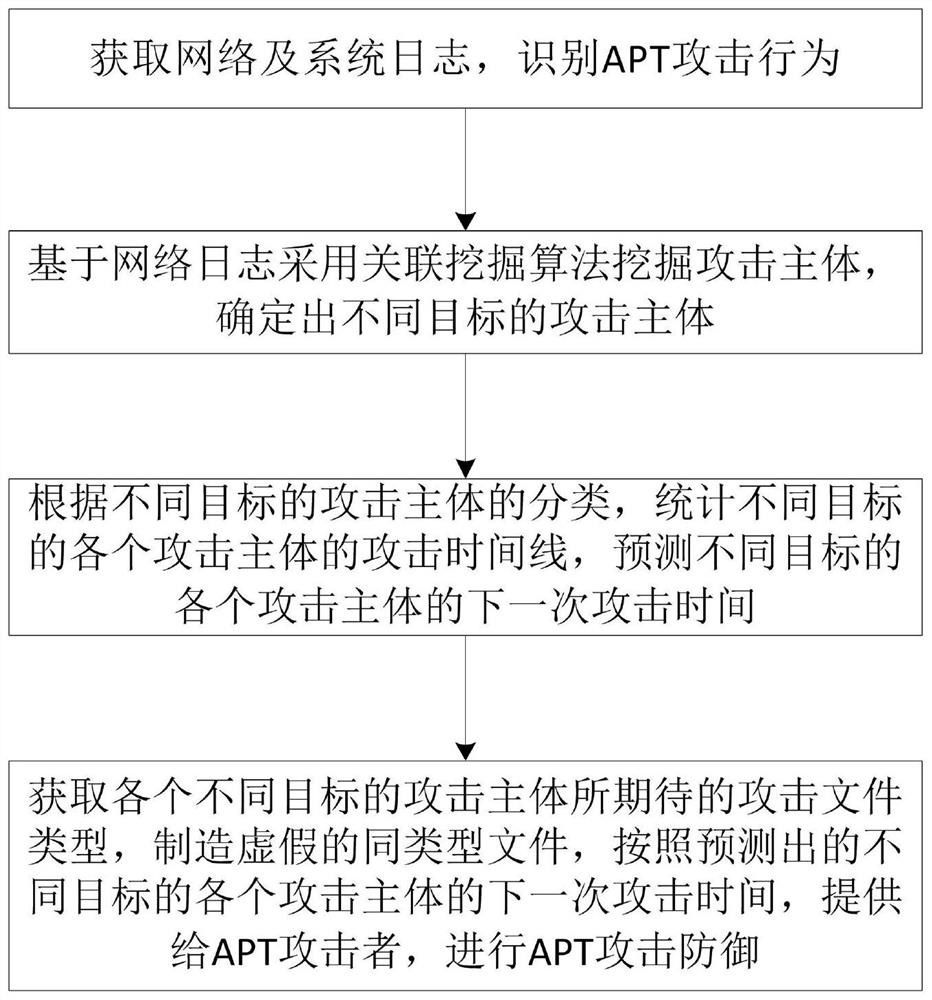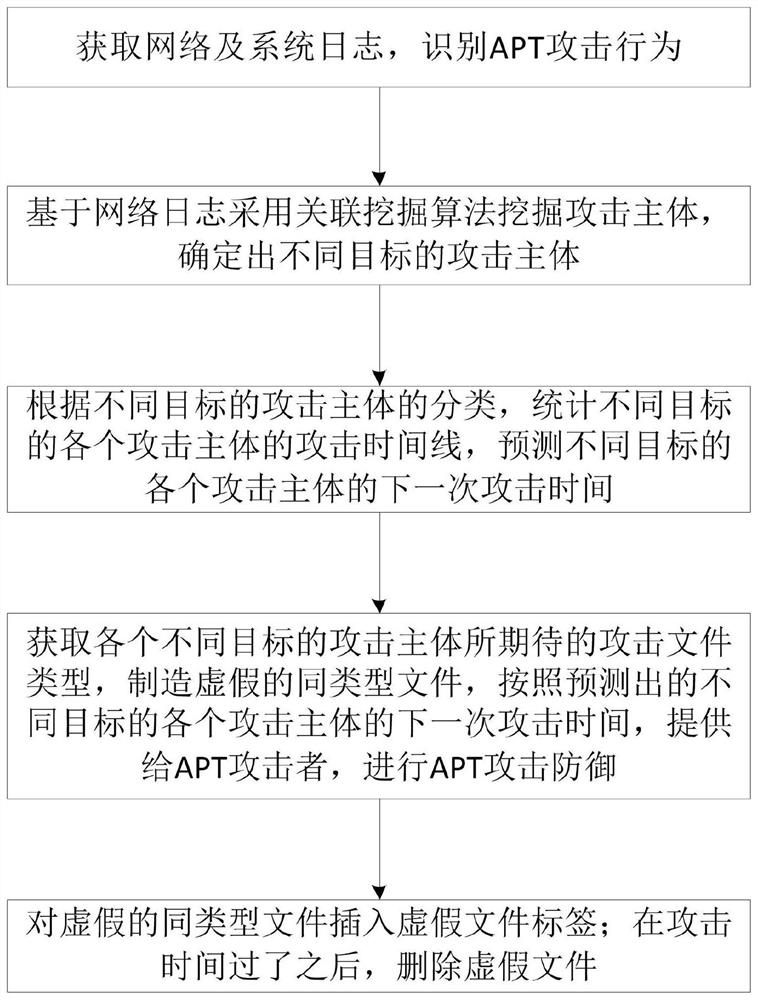APT attack identification and defense method
An attack identification and algorithm technology, which is applied in neural learning methods, special data processing applications, biological neural network models, etc., can solve the problems of lack of reliable and practical APT attack identification and defense methods, and achieve accurate and consistent file content. The effect of content retention
- Summary
- Abstract
- Description
- Claims
- Application Information
AI Technical Summary
Problems solved by technology
Method used
Image
Examples
Embodiment 1
[0055] Such as figure 1 As shown, the APT attack identification and defense method of the present embodiment includes the following steps:
[0056] Step 1. Obtain network and system logs to identify APT attack behavior;
[0057] In this embodiment, the specific process of obtaining the network and system logs described in step 1 and identifying the APT attack behavior is as follows:
[0058] Step 1A1, collect network and system logs, obtain network link log records through network logs, obtain the domain name of relevant information data from network and system logs through dns logs, and then query its source IP address, for the visit of a specific IP address, dns The log parses its source IP address, including access parameters, access content and return data from the dns server;
[0059] Step 1A2, log mining based on DBSCAN cluster analysis, find out the log of abnormal operation, and identify it as an APT attack behavior; the specific process is:
[0060] Step 1A21, sett...
Embodiment 2
[0100] Such as figure 2 As shown, the present embodiment is different from Embodiment 1 in that: after the false same-type file is produced in step 4, a false file label is also inserted into the false same-type file; after step 4, step 5 is also included, After that, delete the fake file.
[0101] After creating a false file of the same type in step 4, the specific method of inserting a false file label into the false file of the same type is: extracting the file name, and extracting the data of a specific part of the file content, synthesizing it into a new text, and obtaining the The hash value of the text, and then store the hash value and the address of the file in the false file identification database (that is, the database stores the specific address and specific content of the false file), and the data of the specific part includes the first 234 to 243 character data.
[0102] The above method of inserting false file tags and the method of synthesizing new text can...
Embodiment 3
[0107] The difference between this embodiment and Embodiment 1 is: the specific process of obtaining the network and system logs described in step 1 and identifying the APT attack behavior is as follows:
[0108] Step 1B1, acquiring user behavior characteristics;
[0109] During specific implementation, the acquisition of user behavior features described in step 1B1 is to perform one-hot word vector feature extraction on user behavior operations affecting the number of files, whether they are system files, whether they are confidential files, and whether they modify permissions. The one-hot word vector uses a 128-dimensional word vector for feature extraction. The user's behavior characteristics carry the security level information of the operation behavior. The security level information of the operation behavior includes the number of files affected by the operation, whether it is a system file, whether it is a confidential file, and whether it has modification authority. Ba...
PUM
 Login to View More
Login to View More Abstract
Description
Claims
Application Information
 Login to View More
Login to View More - R&D Engineer
- R&D Manager
- IP Professional
- Industry Leading Data Capabilities
- Powerful AI technology
- Patent DNA Extraction
Browse by: Latest US Patents, China's latest patents, Technical Efficacy Thesaurus, Application Domain, Technology Topic, Popular Technical Reports.
© 2024 PatSnap. All rights reserved.Legal|Privacy policy|Modern Slavery Act Transparency Statement|Sitemap|About US| Contact US: help@patsnap.com










